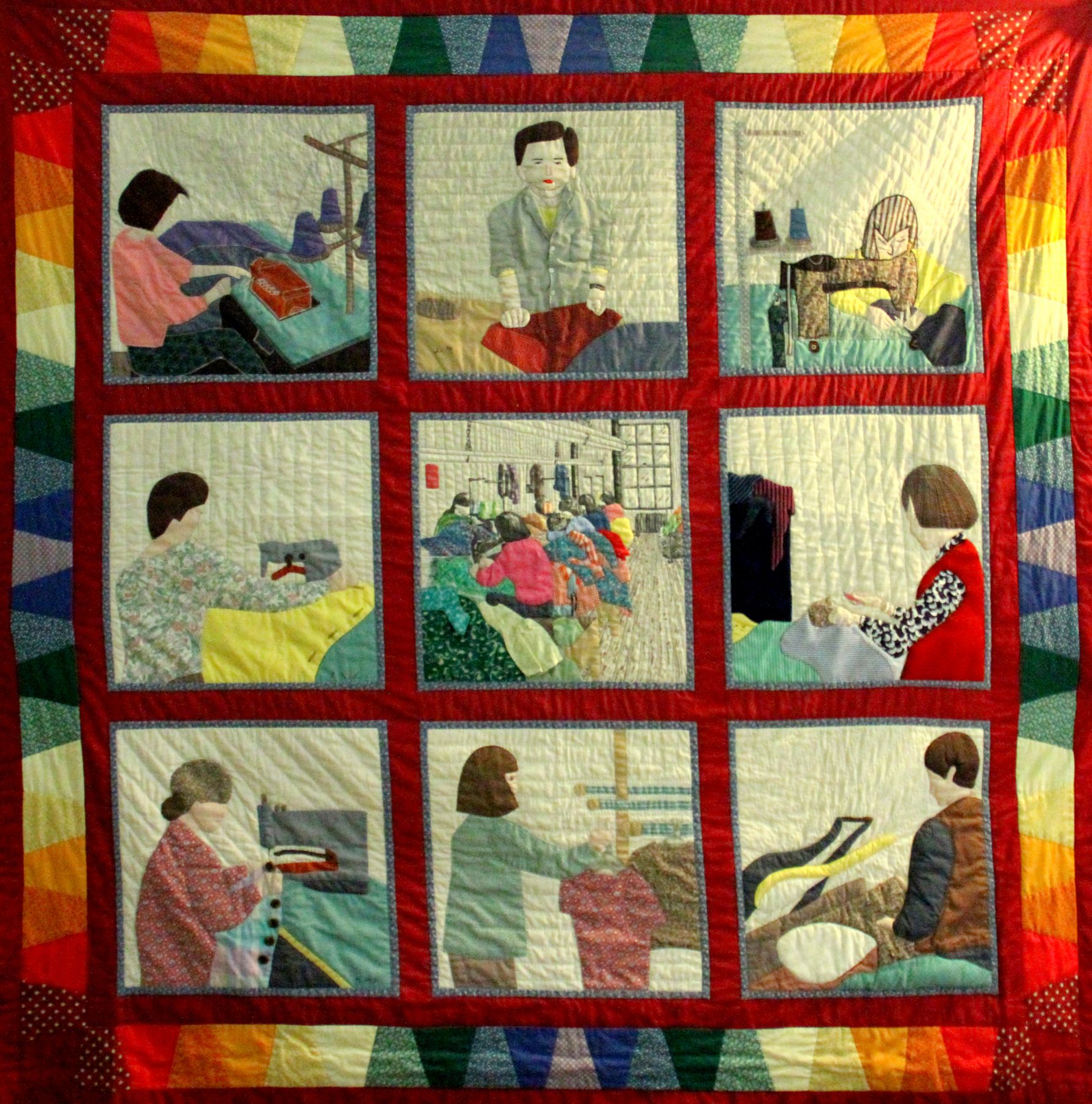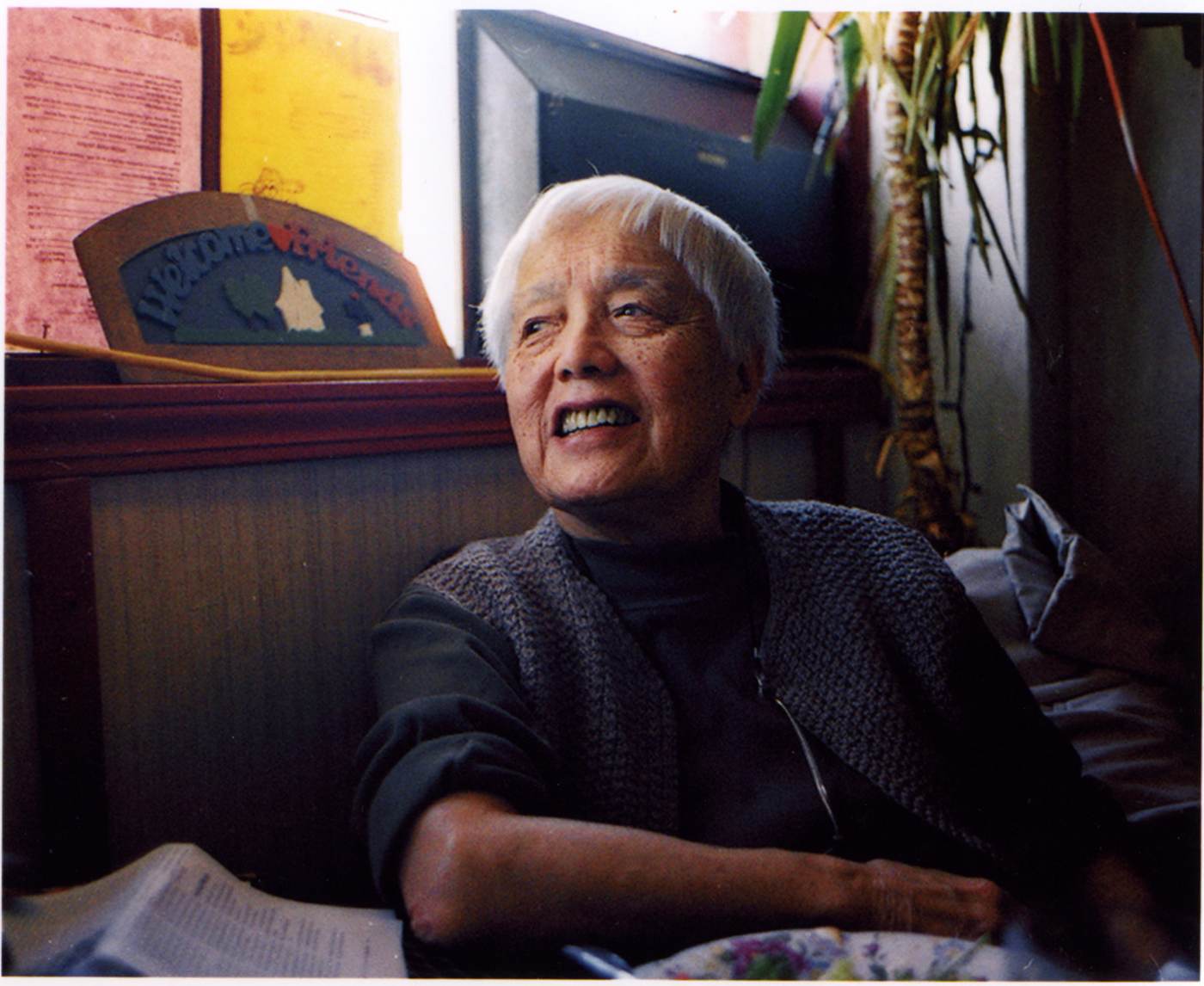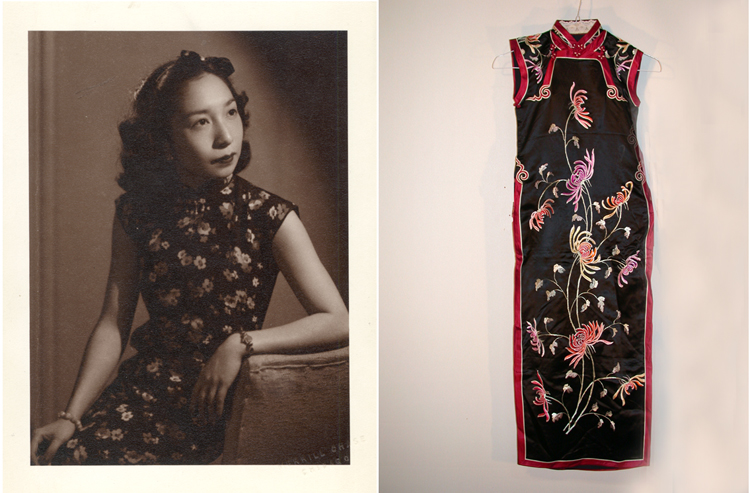纽约市显赫的服装业的起源可以追溯到19世纪中叶,那时德国和东欧移民将经验丰富的服装制造业带到了曼哈顿。经历了一个世纪的兴衰,服装制造业在20世纪80年代的唐人街达到了顶峰。在此期间,女性中国移民推动了该行业的发展,大约有500间工厂雇用了2万名员工。1982年,这些工人举行了唐人街历史上规模最大的罢工,抗议他们的承包商试图绕开工会的规定;仅仅几天之后,每个承包商都满足了他们的要求。照片里的这张被子由Debbie Lee设计,由制衣工人Ng Mui Leung、Sheung Ngor Leung、Cecilia Lo、Yan Chai Mak、So Fong Lee Ng、Sun Ng和Heng Yu Yan缝制,用于MOCA1989年的展览《女工之声:纽约市成衣业的华裔妇女》主题展览。像缝纫这样的工作经常被贬低为仅仅是“女人的工作”,但1982年罢工的影响,以及像这件被子的艺术作品强调了女性在华人社区的真正力量,服装产业对唐人街整体经济的重要作用,以及这项工作的高超技艺。
Collections馆藏Collections馆藏Collections馆藏Collections馆藏Collections馆藏Collections馆藏Collections馆藏Collections馆藏Collections馆藏Collections馆藏Collections馆藏Collections馆藏Collections馆藏Collections馆藏Collections馆藏Collections馆藏Collections馆藏Collections馆藏Collections馆藏Collections馆藏Collections馆藏Collections馆藏Collections馆藏Collections馆藏Collections馆藏Collections馆藏Collections馆藏Collections馆藏Collections馆藏Collections馆藏Collections馆藏Collections馆藏Collections馆藏Collections馆藏Collections馆藏Collections馆藏Collections馆藏Collections馆藏Collections馆藏Collections馆藏Collections馆藏Collections馆藏Collections馆藏Collections馆藏Collections馆藏Collections馆藏Collections馆藏Collections馆藏Collections馆藏Collections馆藏Collections馆藏Collections馆藏Collections馆藏Collections馆藏Collections馆藏Collections馆藏Collections馆藏Collections馆藏Collections馆藏Collections馆藏Collections馆藏Collections馆藏Collections馆藏Collections馆藏
服装工人

16 August 2019 Posted.
Quilt made by garment workers depicting garment work tasks, 1989, Museum of Chinese in America (MOCA) Collection.
由服装工人制作的被子,描绘了服装工作的各项任务分工,1989年,美国华人博物馆(MOCA)馆藏

